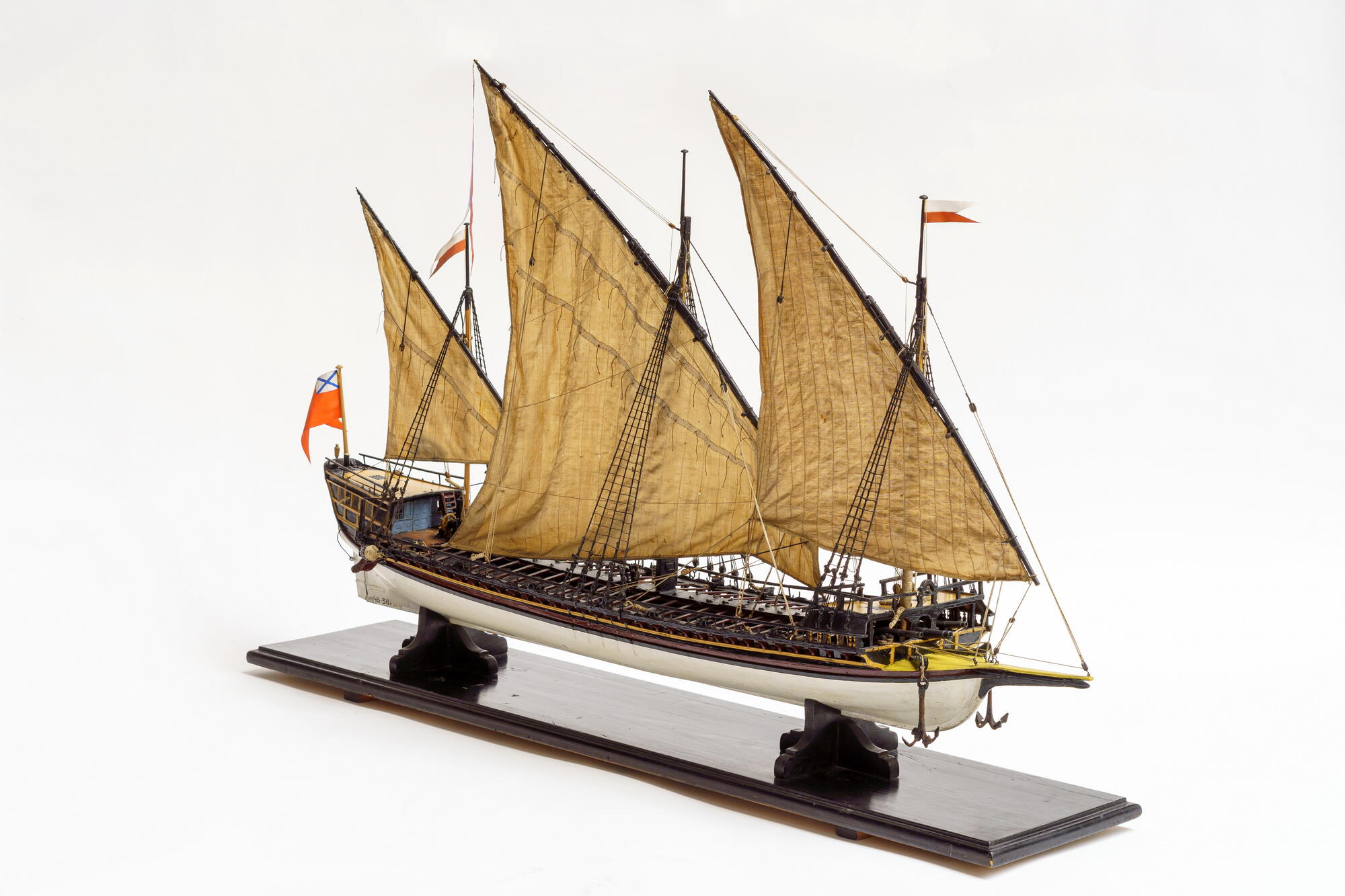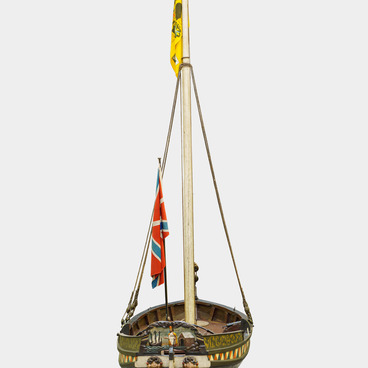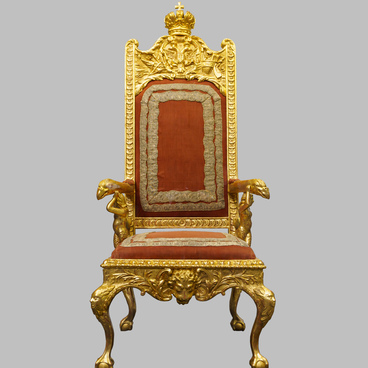Along with larger sailing ships, oared vessels were also built on the Baltic Sea due to the shallowness of the sea (especially in the eastern area of the Gulf of Finland) and the presence of skerry regions where large sailing ships could not maneuver easily. On July 29, 1703, Peter the Great participated in laying down the first galley of the Baltic Fleet named “St. Paul the Apostle” at the Olonets shipyard. The first galleys were based on the “Turkish” design. They had a length of 39.96 m, a width of 5.04 m, and 28–30 banks (benches) for oarsmen. According to the traditions of the galley ship building, the “Turkish” design was actually Greek. All the leading galley builders who constructed oared vessels for the Baltic Fleet until almost the end of the Great Northern War came from Greece. The first galleys of the Baltic Fleet were heavily armed and had between 18 and 21 guns. The crew of the first Baltic galleys could include over 500 members.
In late 1710 — early 1711, the construction of galleys of a new type called scampavia began in Vyborg. These galleys played a crucial role in the second half of the Great Northern War. The terminology describing various types of galleys was not always used consistently. For example, one and the same vessel could be called a galley, a half-galley, a scampavia, and a brigantine. If a particular characteristic of a ship needed to be communicated, such as the crew size, then the exact type of vessel was specified, for example, a “Russian” or “Italian” brigantine.
At the end of the Great Northern War and in the subsequent final years of the reign of Peter the Great, shipbuilders were looking for the best design of galleys. The construction of “French” galleys based on the drawings of the French shipbuilder Claude Niulon began in Russia. The only exception was the “Venetian” 25-bank galley “Dvina” built as an experiment by Francesco di Ponti upon the tsar’s order.
The “Dvina” galley was chosen as the flagship of Fyodor Matveyevich Apraksin. It had a length of 48.5 m and a width of 9.6 m and was equipped with one 24-pounder gun, two 12-pounder guns, and twelve 3-pounder falconets. The galley had three masts. In 1723, Peter the Great put the “Venetian” galley to trial, and after that such galleys were never built again in Russia. The tsar decided that all galleys should be constructed according to the French design.
In late 1710 — early 1711, the construction of galleys of a new type called scampavia began in Vyborg. These galleys played a crucial role in the second half of the Great Northern War. The terminology describing various types of galleys was not always used consistently. For example, one and the same vessel could be called a galley, a half-galley, a scampavia, and a brigantine. If a particular characteristic of a ship needed to be communicated, such as the crew size, then the exact type of vessel was specified, for example, a “Russian” or “Italian” brigantine.
At the end of the Great Northern War and in the subsequent final years of the reign of Peter the Great, shipbuilders were looking for the best design of galleys. The construction of “French” galleys based on the drawings of the French shipbuilder Claude Niulon began in Russia. The only exception was the “Venetian” 25-bank galley “Dvina” built as an experiment by Francesco di Ponti upon the tsar’s order.
The “Dvina” galley was chosen as the flagship of Fyodor Matveyevich Apraksin. It had a length of 48.5 m and a width of 9.6 m and was equipped with one 24-pounder gun, two 12-pounder guns, and twelve 3-pounder falconets. The galley had three masts. In 1723, Peter the Great put the “Venetian” galley to trial, and after that such galleys were never built again in Russia. The tsar decided that all galleys should be constructed according to the French design.







